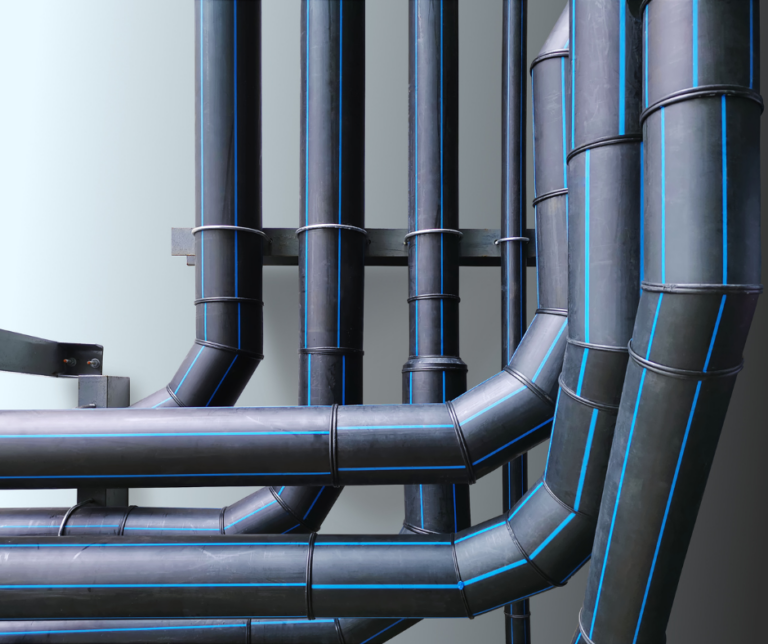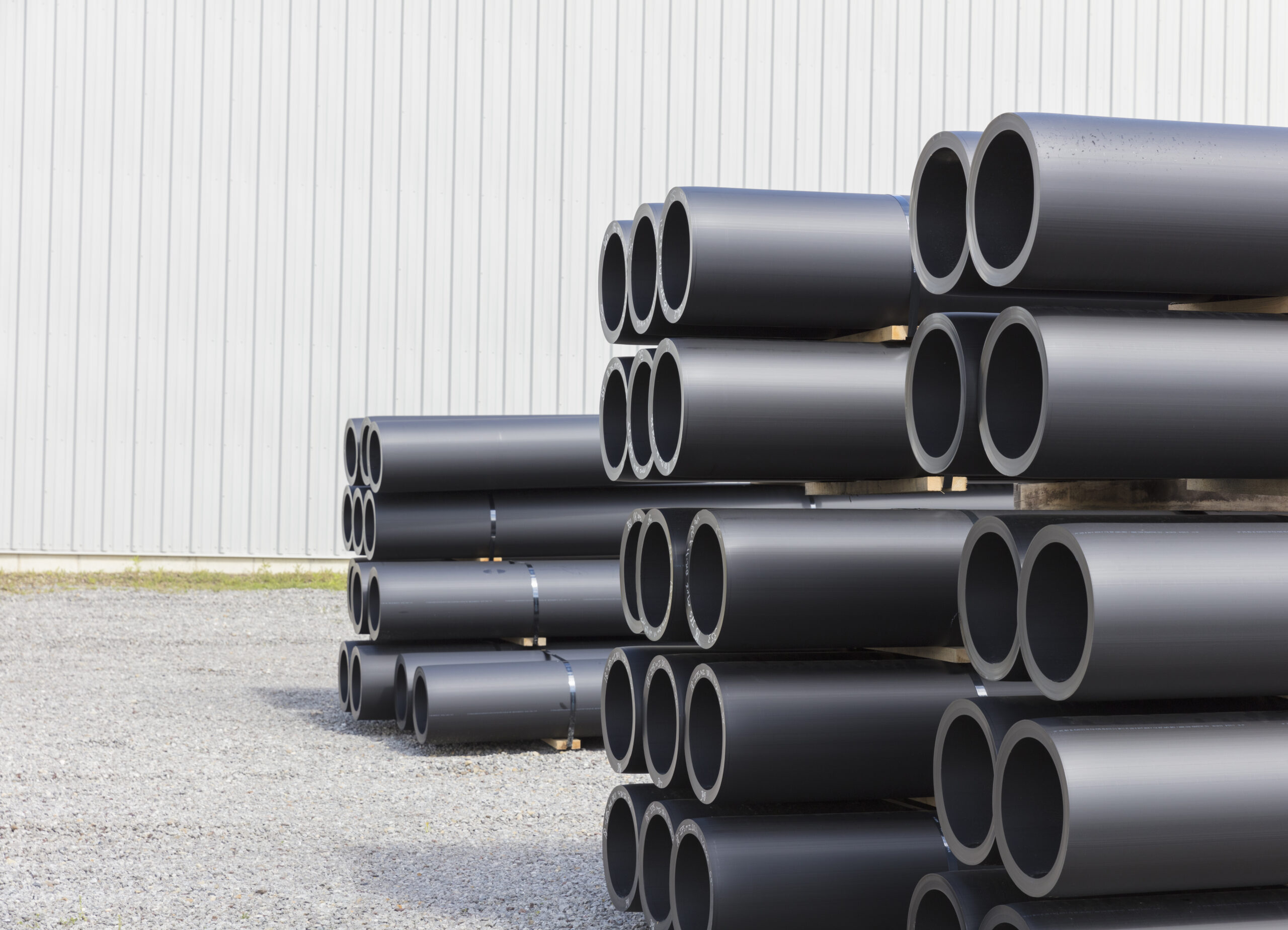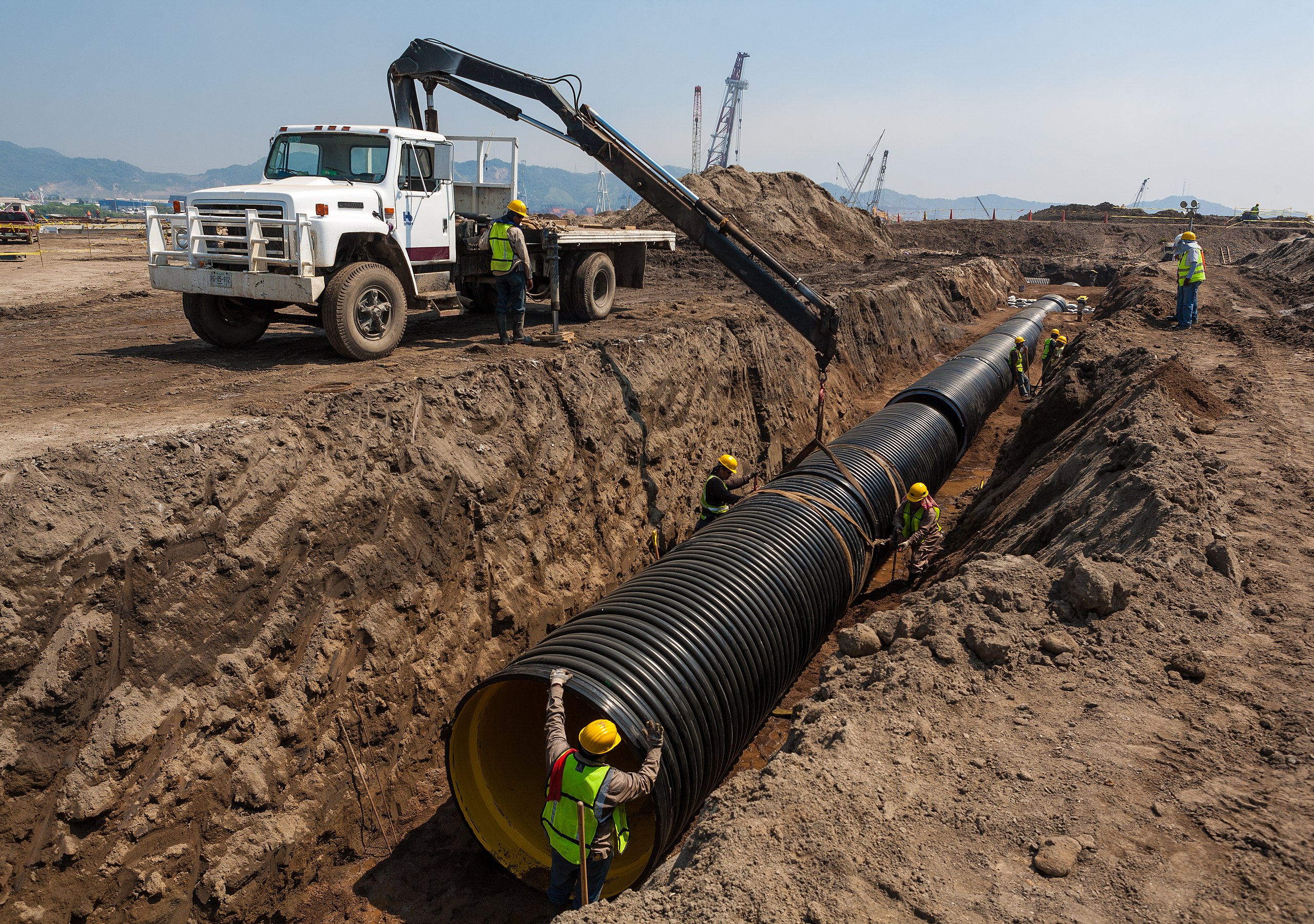Explore the Manufacturing Refine Behind High-Quality HDPE Pipeline and Its Applications
The manufacturing process of top quality HDPE pipes is intricate and systematic. It begins with the selection of basic materials that boost performance. Following this, ethylene undergoes polymerization to form resin, which is then shaped through extrusion. Quality assurance is critical, guaranteeing that the last item satisfies strict requirements. The journey of HDPE pipelines does not end with manufacturing. Their applications across numerous industries disclose a wider relevance worth analyzing.
Recognizing HDPE: Features and Advantages

High-density polyethylene (HDPE) is a versatile polycarbonate recognized for its longevity and resistance to different ecological elements. This material shows superb tensile stamina, making it appropriate for requiring applications. Its low-density framework adds to a lightweight item, helping with simplicity of handling and installation. HDPE additionally showcases exceptional resistance to chemicals, which lessens deterioration when exposed to severe materials.
The product's low wetness absorption even more improves its durability, making it excellent for usage in pipelines and tank. Additionally, HDPE is immune to ultraviolet (UV) radiation, ensuring that items maintain their stability also when exposed to sunlight. Its flexibility allows for the production of elaborate shapes without jeopardizing stamina. The eco-friendly nature of HDPE, typically derived from recycled products, includes in its appeal, promoting lasting practices in production. On the whole, these buildings and benefits make HDPE a preferred choice for various commercial and customer applications.
Resources Selection for HDPE Production
The selection of resources for HDPE manufacturing is important to confirm the last item satisfies the desired specifications and high quality requirements. High-density polyethylene (HDPE) is mainly created from polymerized ethylene, derived from nonrenewable fuel sources such as gas or crude oil. The high quality of these feedstocks greatly affects the mechanical and thermal homes of the last HDPE.
Additives additionally play a significant role in boosting HDPE's efficiency, including antioxidants, UV stabilizers, and colorants, which boost sturdiness and resistance to environmental variables. The choice process have to think about not only the chemical composition of the raw products but additionally their handling features to ensure efficient production.
The sourcing of raw materials ought to focus on sustainability and compliance with environmental policies, as accountable techniques are essential in today's market. Inevitably, mindful raw product choice lays the foundation for generating top notch HDPE pipes suitable for diverse applications.
The Extrusion Refine: Shaping HDPE Pipeline
The extrusion process plays a crucial duty fit HDPE pipes, beginning with careful product prep work methods that assure suitable circulation and consistency. Equally important is the layout of the die, which directly affects the last dimensions and surface area top quality of the pipeline. Together, these aspects add substantially to the efficiency and high quality of HDPE pipe manufacturing.
Material Preparation Strategies
Effective production of HDPE pipes begins with careful material prep work methods, specifically the extrusion procedure. During this stage, high-density polyethylene resin is very first dried to eliminate dampness, ensuring excellent flow characteristics. The resin is after that fed into the extruder, where it goes through heating and melting, transforming right into a thick state. This home heating procedure is carefully controlled to maintain the product's integrity and efficiency. The molten HDPE is required via a die, shaping it into a continual pipe kind. Correct temperature level administration throughout extrusion is crucial, as it directly affects the product's residential or commercial properties and the end product quality. As soon as shaped, the HDPE pipeline is cooled down and reduced to defined lengths, all set for succeeding processing and applications.
Die Design Importance
Precision in die style plays an important role in the extrusion procedure of HDPE pipelines. The die functions as the last shaping tool, straight affecting the pipe's measurements, wall surface thickness, and surface area finish. A well-designed die warranties consistent material flow, lowering flaws such as irregularities and weak places. The geometry of the die have to be optimized to suit the particular residential properties of HDPE, including its thickness and thermal actions throughout extrusion. Additionally, the cooling price of the product as it passes through the die can substantially affect the pipe's structural stability. Investing in advanced die technology is essential for makers intending to generate top quality HDPE pipes that meet sector requirements and consumer assumptions.
High Quality Control Measures in HDPE Production
Various aspects affect the top quality of HDPE pipeline production, efficient top quality control procedures are essential to ensure uniformity and dependability in the final product (American Plastics HDPE Pipe Manufacturing). Trick high quality control practices include strenuous material examination, verifying that the raw polyethylene satisfies recognized standards for purity and density. Throughout the extrusion procedure, parameters such as temperature level, pressure, and cooling time are carefully kept an eye on to preserve dimensional precision and structural integrity
In enhancement, post-production testing is important; manufacturers usually perform hydrostatic tests to analyze the pipeline's stamina and resistance to pressure. Aesthetic evaluations for surface area issues further boost quality control. Certification from pertinent standards companies, like ASTM or ISO, gives an extra layer of integrity. By carrying out these detailed top quality control measures, manufacturers can decrease flaws, improve performance, and make sure that the HDPE pipes satisfy the details needs of various applications, inevitably causing consumer satisfaction and rely on the item.
Applications of HDPE Pipeline Throughout Industries
HDPE pipelines are made use of across various industries because of their longevity and flexibility. In water distribution systems, they guarantee effective delivery, while in wastewater administration, they offer dependable remedies for waste transportation. Furthermore, agricultural irrigation networks profit from HDPE's resistance to deterioration and adaptability, making it an excellent choice for contemporary farming practices.

Water Distribution Solutions
A considerable number of markets rely upon high-density polyethylene (HDPE) pipelines for effective water circulation systems. Understood for their durability and resistance to corrosion, HDPE pipelines are widely used in municipal supply of water networks, agricultural irrigation, and commercial applications. Their lightweight nature promotes very easy handling and setup, lowering labor prices and time. Additionally, HDPE pipes can fit different pressure levels, making them appropriate for both reduced and high-pressure systems. hdpe pipe fittings Midland TX. The flexibility of the material permits for smooth integration right into existing infrastructure, decreasing the requirement for substantial excavation. HDPE's resistance to chemical leaching guarantees that the water supplied stays safe and tidy, making it a perfect option for maintaining the top quality of safe and clean water throughout various industries.
Wastewater Monitoring Solutions
Efficient water distribution systems additionally lead the way for cutting-edge wastewater administration remedies, where high-density polyethylene (HDPE) pipes play a substantial function. Renowned for their sturdiness and resistance to deterioration, HDPE pipes are excellent for transporting wastewater in different settings. Their adaptability enables for very easy installment in complicated atmospheres, minimizing the need for considerable excavation. Furthermore, HDPE's smooth indoor surface area minimizes rubbing, improving circulation prices and effectiveness. These pipes are likewise immune to chemical leaching, making certain that pollutants do not compromise the surrounding setting. Industries, municipalities, and therapy facilities progressively depend on HDPE pipes for their integrity and longevity, making them a favored selection for contemporary wastewater monitoring systems. This flexibility highlights the vital value of HDPE pipes throughout numerous applications.
Agricultural Watering Networks
Agricultural irrigation networks profit greatly from making use of high-density polyethylene (HDPE) pipelines, which supply reliable and trustworthy water distribution to crops. HDPE pipes are light-weight, making them very easy to transport and set up, while their versatility permits numerous configurations in diverse surfaces. These pipelines show exceptional resistance to deterioration, chemicals, and UV radiation, guaranteeing toughness in extreme farming environments. Furthermore, their smooth indoor surface area reduces rubbing loss, optimizing water circulation and lowering energy expenses linked with pumping. The long life of HDPE pipelines, commonly exceeding 50 years, adds to lower upkeep and replacement expenses. Farmers progressively count on HDPE pipelines to boost irrigation efficiency and promote sustainable farming techniques, ultimately leading to improved crop yields and resource conservation.

Future Trends in HDPE Pipeline Technology
As the need for lasting and informative post reliable infrastructure grows, improvements in HDPE pipeline modern technology are poised to transform numerous sectors. Emerging trends consist of the integration of clever innovations, such as sensors and IoT abilities, which facilitate real-time tracking of pipeline problems, reducing maintenance expenses and avoiding leakages. Furthermore, the advancement of advanced hose connector manufacturing strategies, such as 3D printing, is making it possible for the manufacturing of facility, customized pipeline layouts that cater to certain task requirements.
The emphasis on recycling and circular economy practices is driving the innovation of HDPE pipelines made from recycled materials, boosting sustainability. Boosted jointing techniques, such as electro-fusion and mechanical fittings, are additionally boosting installation efficiency and integrity. Ultimately, the expanding focus on environmental laws is pushing makers to take on greener manufacturing processes, making certain that HDPE pipelines not just fulfill sector requirements yet also cultivate a more lasting future for facilities advancement.
Regularly Asked Questions
Exactly How Does HDPE Compare to Various Other Plastic Products?
HDPE outperforms lots of various other plastic materials regarding resilience, chemical resistance, and versatility. Its low thickness and high tensile toughness make it perfect for various applications, commonly exceeding choices in both efficiency and longevity.
What Are the Ecological Effects of HDPE Manufacturing?
The ecological effects of HDPE manufacturing include greenhouse gas discharges, energy usage, and prospective air pollution from manufacturing procedures. Furthermore, inappropriate disposal can lead to dirt and water contamination, raising concerns concerning long-term ecological effects.
Can HDPE Piping Be Recycled?
Yes, HDPE pipelines can be reused. Many centers accept made use of HDPE for handling, transforming it into brand-new products. This recycling adds to sustainability efforts, reducing plastic waste while conserving sources and energy in the production cycle.
What Is the Lifespan of HDPE Pipes?

How Do Temperature Variations Influence HDPE Pipeline Efficiency?
Temperature level variations considerably influence HDPE pipeline efficiency, affecting adaptability and toughness. try this web-site Heats can cause softening, while low temperatures may create brittleness, inevitably affecting the pipe's longevity and viability for numerous applications in varied atmospheres.